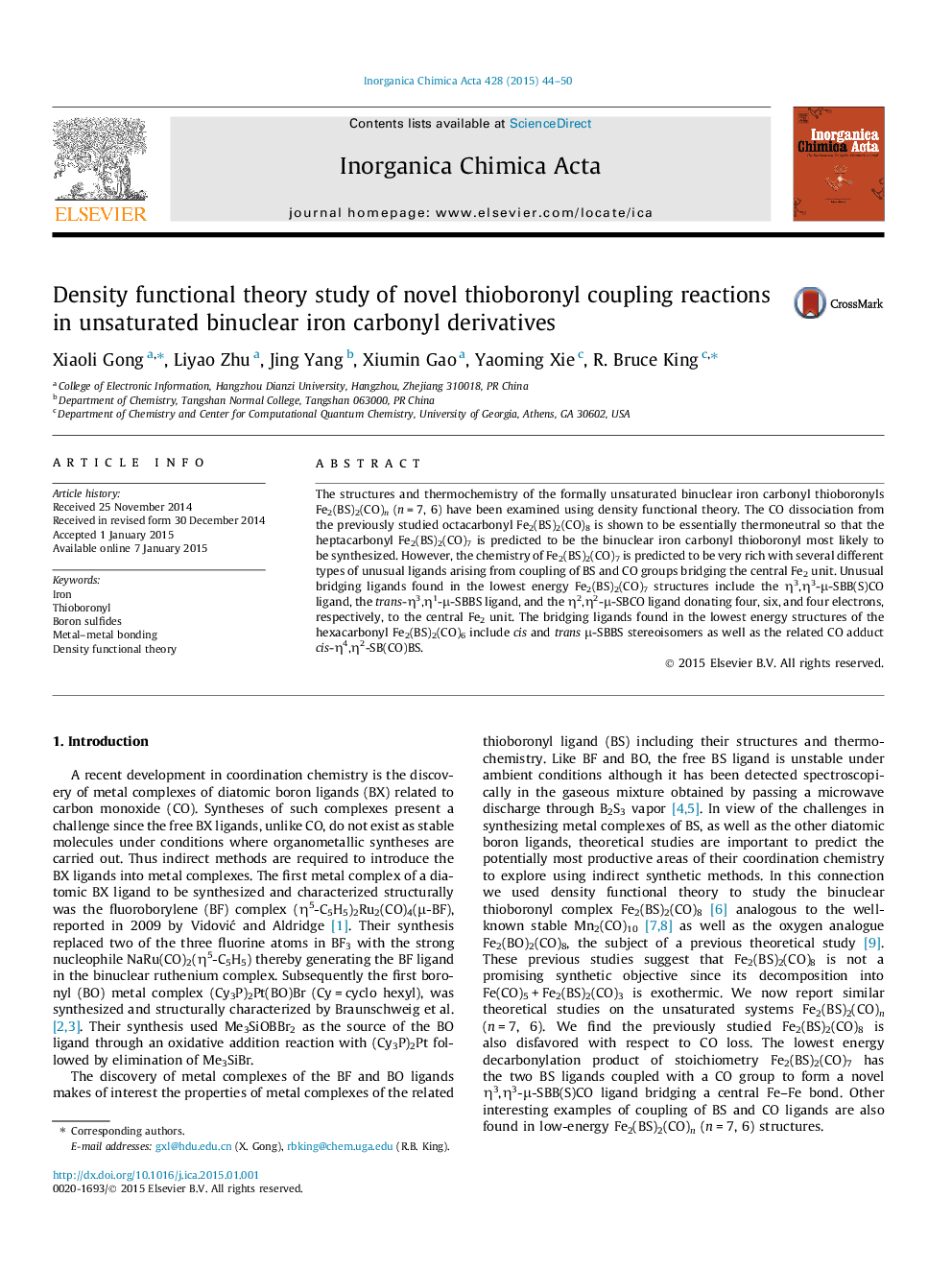| Article ID | Journal | Published Year | Pages | File Type |
|---|---|---|---|---|
| 1305503 | Inorganica Chimica Acta | 2015 | 7 Pages |
•Fe2(BS)2(CO)n (n = 7, 6) have been examined using density functional theory.•Bridging η3,η3-μ-SBB(S)CO, trans-η3,η1-μ-SBBS, and η2,η2-μ-SBCO ligands are found in Fe2(BS)2(CO)7 structures.•Bridging cis and trans μ-SBBS ligands are found in low-energy Fe2(BS)2(CO)6 structures.•The CO adduct cis-η4,η2-SB(CO)BS is also a bridging ligand in a low-energy Fe2(BS)2(CO)6 structure.
The structures and thermochemistry of the formally unsaturated binuclear iron carbonyl thioboronyls Fe2(BS)2(CO)n (n = 7, 6) have been examined using density functional theory. The CO dissociation from the previously studied octacarbonyl Fe2(BS)2(CO)8 is shown to be essentially thermoneutral so that the heptacarbonyl Fe2(BS)2(CO)7 is predicted to be the binuclear iron carbonyl thioboronyl most likely to be synthesized. However, the chemistry of Fe2(BS)2(CO)7 is predicted to be very rich with several different types of unusual ligands arising from coupling of BS and CO groups bridging the central Fe2 unit. Unusual bridging ligands found in the lowest energy Fe2(BS)2(CO)7 structures include the η3,η3-μ-SBB(S)CO ligand, the trans-η3,η1-μ-SBBS ligand, and the η2,η2-μ-SBCO ligand donating four, six, and four electrons, respectively, to the central Fe2 unit. The bridging ligands found in the lowest energy structures of the hexacarbonyl Fe2(BS)2(CO)6 include cis and trans μ-SBBS stereoisomers as well as the related CO adduct cis-η4,η2-SB(CO)BS.
Graphical abstractUnusual bridging ligands found in the lowest energy heptacarbonyl Fe2(BS)2(CO)7 structures include the η3,η3-μ-SBB(S)CO ligand, the trans-η3,η1-μ-SBBS ligand, and the η2,η2-μ-SBCO ligand donating four, six, and four electrons, respectively, to the central Fe2 unit. The bridging ligands found in the lowest energy structures of the hexacarbonyl Fe2(BS)2(CO)6 include cis and trans μ-SBBS stereoisomers as well as the related CO adduct cis-η4,η2-SB(CO)BS.Figure optionsDownload full-size imageDownload as PowerPoint slide
